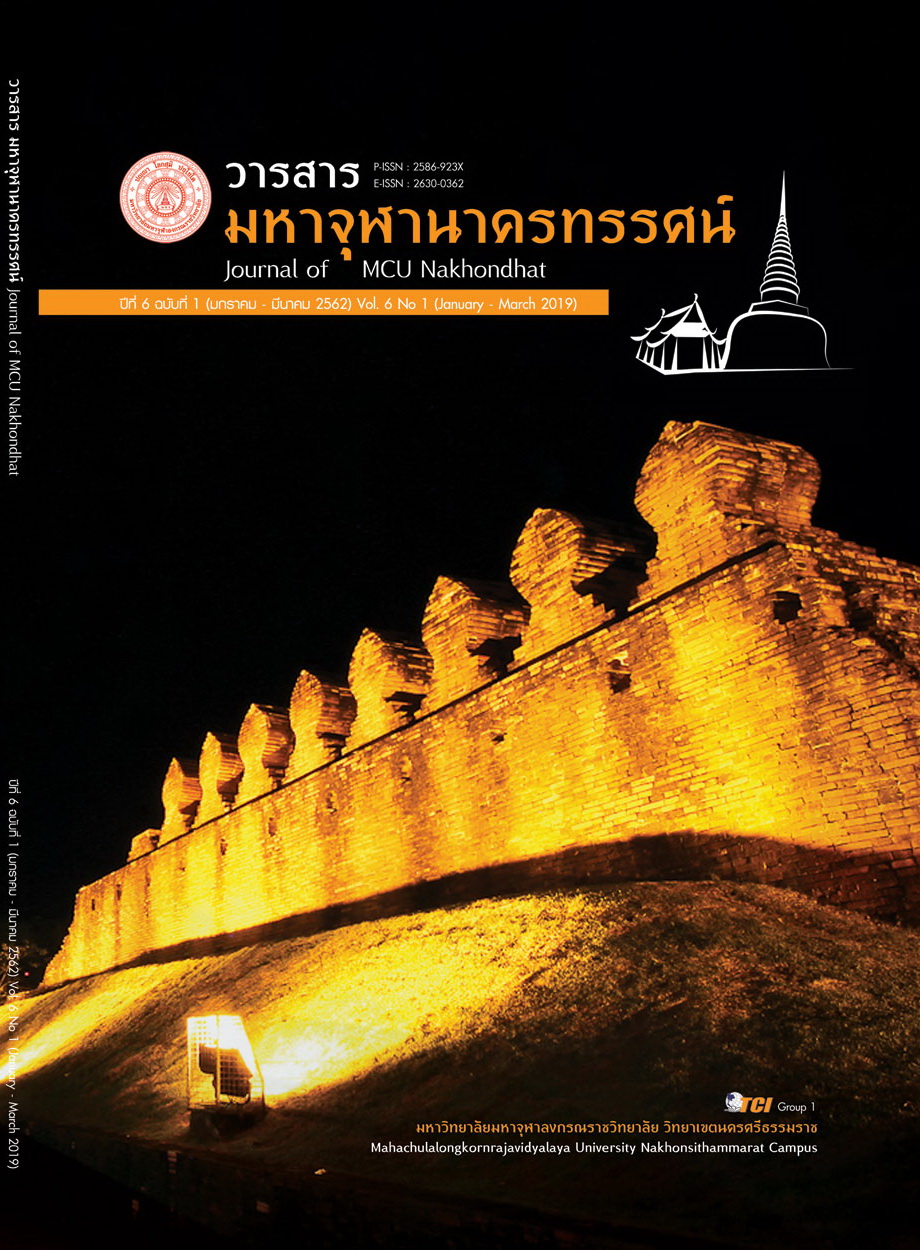MANAGEMENT THE ROUTES AND THE NETWORKS OF THE TAPEE BASIN ECO-TOURISM
Main Article Content
Abstract
The research aims to: (1) study the self-management potential of the Tapee basin community. (2) develop the ecotourism route and network of the Taipee basin community And (3) propose ecotourism models of Srivichaya Civilization of the Tapee basin. It was qualitative research methodology. The scope of the content was ecotourism. Tourist attractions include the Liled, Tachang, Lamed and Phumreaing tourist group. In the study, the researchers selected the target communities of the Tapee basin. People's lifestyle was defined by the Tapee basin. The water route was located near the community houses. They used natural water sources for their lives. There are 4 main data contributors such as local wisdom group about ecotourism community. Each community was 2 persons, there was 4 communities and in total of 8 persons. Sociology Academic and community development group were 3 persons, 3 cultural scholars and 4 tourism experts. The total was 18 persons.
The results of the study showed that (1) all four tourist attractions have potential for self-management of the Tapee basin community including area of accessibility, facility, environment and participation. (2) Development of ecotourism routes and networks of the Tapee basin community. They can be possible to set the routs in three forms. The first model is one day trip (not stay overnight). The second model is one day trip (stay overnight). The third model is two day and one night trips. And (3) the researchers propose the tourism model of Srivchaya Civilization of the Tapee community basin called “LIFE SMILE MODEL”. There is a sub-element such as determining the ecotourism model of Srivichaya Civilization of the Tapee basin community
Article Details
References
พจนา สวนศรี. (2546). เอกสารจัดการท่องเที่ยวโดยชุมชน. (พิมพ์ครั้งที่ 1). กรุงเทพฯ: กองทุนแคนาดา ประจําประเทศไทย.
พจนา สวนศรี. (2546). คู่มือการจัดการท่องเที่ยวโดยชุมชน (Community Based Tourism Handbook). กรุงเทพฯ: โครงการท่องเที่ยวเพื่อชีวิตและธรรมชาต.
ชัชชัย สุจริต. (2557). รูปแบบการจัดการท่องเที่ยวโดยชุมชนของตำบลนางพญา อำเภอท่าปลา จังหวัดอุตรดิตถ์. รายงานวิจัย. มหาวิทยาลัยราชภัฏอุตรดิตถ์.
กระทรวงการท่องเที่ยวและกีฬา สืบค้นเมื่อ 21 กุมภาพันธ์ 2561 สืบค้นได้ https://tourismatbuu.wordpress.com
จังหวัดสุราษฎร์ธานี สืบค้นเมื่อ 29 พฤษภาคม 2560 สืบค้นได้จาก https://th.wikipedia.org/wiki
ชุมชนน่าเที่ยว จังหวัดสุราษฎร์ธานี สืบค้นได้จาก https://www.taklongtongteaw.com/community-attractions-suratthani-2/
อุบลวรรณ์ ประดับสุข, (2560).“การเรียนรู้และประสบการณ์เรื่องการท่องเที่ยวโดยชุมชนจากสกว. (ภาค)” 2560 [ออนไลน์].เข้าถึงได้จาก https://www.etatjournal.com/upload/143/25493_2.pdf..


